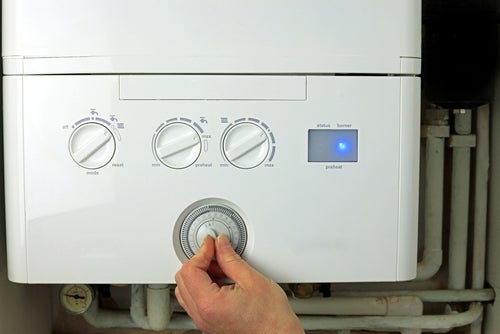it is important that you thoroughly understand the different boiler options available to you. One type to consider is combi boilers.
-
What is a combi boiler
-
How Do Combi Boilers Work
-
Benefits of Combi Boilers
-
One of the biggest mistakes that older boiler
-
Last thoughts
What is a combi boiler
It is best to learn about the best combi boilers in Canada before you make your decision. A combination boiler is a type of water heater and central heating unit neatly housed in a single unit. Its main advantage is that it can heat the water directly from the mains instead of using a tank.
A combination boiler is generally referred to as a “safe” type boiler. It uses the waste gases produced during the heating process to generate more heat. This type of boiler is more efficient than older models, which allow energy to go into ether. Combination boilers are compact and can be wall mounted. Unlike conventional gas or electric water heaters, it does not require a tank or hot water cylinder.
A conventional boiler uses a cold water tank to heat the water, which is then stored in an insulated cylinder. Older models often have the same heating and hot water systems, which means that if you want both, you should have whichever is right for you.
How Do Combi Boilers Work
A combination boiler has two functions: it can heat water and provide heat to your central heating system. These two functions are performed from separate heat exchangers. The primary heat exchanger is responsible for heating the water that goes through the central heating pipes. It then recycles the hot water around the system.
Modern combination boiler models have a digital controller that can control the central heating. This can be used to send and receive messages to the individual thermostats. This type of boiler can also communicate with a wall-mounted zone thermostat.
Unlike traditional gas or electric water heaters, a combination boiler doesn’t require a hot water cylinder or tank. Instead, it uses the mains to supply water, and this allows it to produce hot water immediately. Unlike other types of water heaters, a combination boiler doesn’t require a tank. It’s always on standby, waiting for you to turn on the tap.
Unfortunately, a combination boiler can’t simultaneously supply both the hot water and the central heating at the same time. This means that instead of scuzzy, recycled water coming into your taps, a valve will stop the flow of water to the radiator until you run the hot tap.
Benefits of Combi Boilers
There are many reasons to replace your old boiler with a new one, and at least one of these is that it’s more energy-efficient. For instance, a typical non-condensing boiler is typically around 60-70% efficient, while a new combination boiler is around 90% efficient.
A new combination boiler is also much more energy-efficient than your old one. If you’re planning on replacing your old boiler, it’s a great way to cut down on your household’s carbon footprint.
One of the biggest mistakes that older boiler
models make is having two simple states: on and off. With a combination boiler, you can separate the water and the heat from the central heating system. Modern combination boiler models come with digital controls that allow you to set up different heating zones in your house. For instance, you can have your bedroom and living areas get hot at different times of the day.
A combination boiler is less prone to issues, such as leaking pipes. In extremely cold weather, a combination boiler can prevent pipes from freezing. One of the biggest advantages of a combination boiler is that it doesn’t require a separate space for a tank or an airing cupboard. Instead, it can be wall-mounted in various areas of your house.
Last thoughts
A combination boiler is the most common type of water heater. It uses the mains to supply hot water to the different hot water taps in your home. Unlike other types of water heaters, this one does not require a storage tank. It is energy saving and financially beneficial. Since it provides hot water on demand, you only pay for what you use.






























